Recent News

Thursday, July 30, 2015
Antony Jameson, professor of aeronautics and astronautics, has won the Daniel Guggenheim Medal, which is considered one of the highest honors presented for a lifetime of achievement in aeronautics. Past recipients have worked in industry, government and academia, and have included Orville Wright,...

Wednesday, June 10, 2015
Stanford engineers have partnered with the U.S. Army Research Laboratory (ARL) to set a computational record. Stanford Professor Charbel Farhat and his research team at the Army High Performance Computing Research Center (AHPCRC) used a new, high-end, massively parallel computer to demonstrate the...
Tuesday, April 14, 2015
Emeritus Prof. Walter Vincenti, '38, spoke to the Stanford Emeriti Council on what Stanford was like when he was an undergraduate. He was introduced by former Aero/Astro Chair Emeritus Prof. George Springer, who pointed out that Prof. Vincenti has the longest connection with Stanford of anyone in...

Thursday, April 2, 2015
Five Stanford Engineering faculty members have received National Science Foundation Early Career Development (CAREER) awards for 2015. The CAREER program helps promising junior faculty pursue outstanding research while also improving education.

Friday, December 5, 2014
Thomas Lee, Sanjay Lall, Boris Murmann and Christos Kozyrakis, all members of the electrical engineering faculty at Stanford, have been named IEEE fellows in recognition of their extraordinary achievements in engineering.
Lee was recognized for contributions to the design of CMOS radio-frequency...

Thursday, December 4, 2014
Stanford Engineering alumnus James J. Spilker has been awarded the 2015 IEEE Edison Medal. Spilker, who received his BS, MS and Ph.D. in electrical engineering from Stanford, is executive chairman of AOSense Inc. and a consulting professor of aeronautics and astronautics at Stanford.
Monday, August 18, 2014
Friday, August 15, 2014
Standing at the edge of an isolated field, Peter Blake dropped a few bits of dried grass to check the wind before giving the signal to launch the small, computer-controlled aircraft that he and seven other students built for a course at Stanford School of Engineering.
"In less than 10 weeks these...
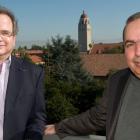
Friday, August 1, 2014
New green propellants. Tiny aerial vehicles that fly like birds. Faster algorithms to simulate turbulence. The most precise positioning technology known to science.
These are among the projects that will be pursued by the King Abdulaziz City for Science and Technology (KACST)/Stanford Center of...

Wednesday, June 11, 2014
Engineers have spent the past decade developing and improving autonomous vehicles that use sensors and software systems to replace human drivers.
Now one Stanford professor is working on the next challenge: developing software systems to manage fleets of autonomous taxis, buses or shuttles.
“The...
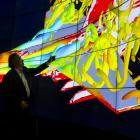
Thursday, June 5, 2014
"Seeing is believing," or so the saying goes. A new facility housed in the Huang Engineering Center gives that old adage a forward spin: Seeing is understanding.
Stanford's new HANA Immersive Visualization Environment, or HIVE for short, is designed to give researchers a powerful new tool to see,...
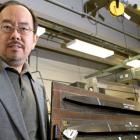
Tuesday, March 11, 2014
A new generation of aircraft is taking flight on wings made from carbon composites, a new class of materials less expensive to manufacture than aluminum with the added benefit of embedding safety sensors into a plane’s frame and skin.
As these new materials have started coming into commercial use,...

Monday, February 10, 2014
Could a computer analysis of dolphin communications serve as a model for deciphering possible future contacts with an extraterrestrial race?
That was but one of the questions that arose last week when dozens of space scientists gathered at Stanford Engineering for the NASA Innovative Advanced...
Friday, October 18, 2013
Aero/Astro Senior Research Engineer Todd Walter is completing his two-year term as president of the ION Council. The Council acts as the board of directors for ION, the Institute of Navigation.
ION describes itself as the world's leading professional organization for the advancement of positioning...

Wednesday, October 16, 2013
Like undiscovered groves of giant redwoods, centuries-old living corals remain unmapped and unmeasured. Scientists still know relatively little about the world's biggest corals, where they are and how long they have lived.
The secret to unlocking these mysteries may lie with a shoebox-size flying...
Tuesday, October 15, 2013

Wednesday, September 11, 2013
Space camp? Try space school. Of roughly 500 astronauts that NASA has trained thus far, 21 attended Stanford University, and four of these alums are on the active roster.
Michael Hopkins (MS AA '92) is one of these four.
A colonel in the U.S. Air Force, Hopkins will blast off for the International...
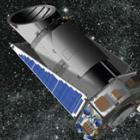
Monday, May 20, 2013
NASA officials announced Wednesday, May 15, that the Kepler space telescope – the agency's primary instrument for detecting planets beyond our solar system – had suffered a critical failure and could soon be shut down permanently.
Scott Hubbard, a consulting professor of aeronautics and...

Tuesday, May 14, 2013
Richard Christensen, a professor emeritus of aeronautics and astronautics, has been selected as the 2013 recipient of the Timoshenko Medal by the American Society of Mechanical Engineers (ASME), among the highest honors in the field of applied mechanics.
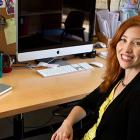
Tuesday, May 7, 2013
Sigrid Close, an assistant professor of aeronautics and astronautics in the School of Engineering, has received a 2013 Early Career Research Award from the U.S. Department of Energy (DOE). The five-year grants bolster exceptional researchers during the crucial early career years, a period when many...

Tuesday, March 12, 2013
On Saturday, an asteroid the size of one and a half football fields flew within 240,000 miles of Earth. If the space rock had hit land, it would have leveled an area the size of San Francisco Bay. If it had hit the Pacific Ocean, the impact would have sent a tsunami to every facing shore.
But what...

Wednesday, February 20, 2013
New research by Stanford Aeronautics and Astronautics assistant professor Sigrid Close suggests she’s on track to solve a mystery that has long bedeviled space exploration: Why do satellites fail?

Thursday, February 7, 2013
Eight professors from the Stanford University School of Engineering are among the newly elected National Academy of Engineering (NAE) members, the NAE said today.
According to the NAE, membership honors those who have made outstanding contributions to "engineering research, practice, or education,...

Friday, January 25, 2013
Stanford Engineering's Center for Turbulence Research (CTR) has set a new record in computational science by successfully using a supercomputer with more than one million computing cores to solve a complex fluid dynamics problem—the prediction of noise generated by a supersonic jet engine.
Tuesday, January 1, 2013

Sunday, December 30, 2012
Stanford researchers, in collaboration with NASA's Jet Propulsion Laboratory and the Massachusetts Institute of Technology, have designed a robotic platform that could take space exploration to new heights.
The mission proposed for the platform involves a mother spacecraft deploying one or several...

Wednesday, December 19, 2012
A student whose work could further exploration of moons, comets and asteroids and another who is working to engineer a photosynthetic bacterium are this year’s recipients of United Technologies Research Center (UTRC) graduate research fellowships.
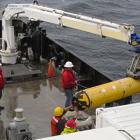
Monday, November 26, 2012
Underwater robots just got smarter. Engineers at Stanford and the Monterey Bay Aquarium Research Institute (MBARI) have developed a system that allows autonomous underwater vehicles (AUVs) to better anticipate obstacles in their path, enabling them to safely photograph even treacherous, distant...

Friday, August 17, 2012
NASA has announced that Debbie Senesky and Marco Pavone, both assistant professors in the Department of Aeronautics and Astronautics at the Stanford University School of Engineering, have been selected as recipients of the agency’s inaugural Space Technology Research Opportunities for Early Career...

Monday, July 23, 2012
Charbel Farhat, the Vivian Church Hoff Professor of Aircraft Structures and the Chairman of the Department of Aeronautics and Astronautics, has received the International Association for Computational Mechanics (IACM) Award in recognition of his outstanding and sustained contributions to the broad...

Monday, June 25, 2012
A Stanford team with a novel idea finished in the top six of the U.S. Department of Energy’s (DOE) National University Clean Energy Business Challenge earlier this month.
In May, the Stanford team’s project beat out more than 60 other university teams to win the competition’s western regional...

Friday, June 8, 2012
Hard as it is to believe today, the Global Positioning System was once an orphan.
“The Air Force didn’t want it, in the beginning. They were forced to fund it. They’d rather have been building airplanes,” said Bradford Parkinson, professor of aeronautics and astronautics at Stanford and a former...

Wednesday, May 9, 2012
Aeronautical engineers believe that hypersonic planes flying at seven to fifteen times the speed of sound will someday change the face of air travel here on Earth and out into space. If we can master its ‘known unknowns,” that is.
Hypersonic flight is a particularly intense engineering challenge...
Thursday, March 31, 2011
The National Research Council (NRC) has released its long-awaited study of 5,000 doctoral programs in 59 fields of study. The NRC report is seen as the gold-standard in ranking U.S. Ph.D. programs. A survey of aeronautics professors around the country showed that Stanford's Department of...
Thursday, March 31, 2011
Stanford Aero/Astro Emeritus Prof. Arthur Bryson has received the 2009 Daniel Guggenheim Medal "for a lifetime of seminal contributions to real systems, creating and applying practical optimal control and estimation techniques to airplanes, rotorcraft, and missiles."
Friday, January 28, 2011
Room 001 of the William F. Durand Building in the Engineering Quad, the Space and Systems Development Laboratory (SSDL), is clustered with a variety of tools and machinery. At the entrance, there is a shelf lined with rovers that once moved across the Quad in search of water on an extraterrestrial...
Friday, May 29, 2009
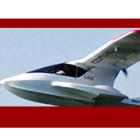
Monday, September 1, 2008
A 2004 regulatory change by the Federal Aviation Adminstration (FAA) that created an entirely new Light Sport Aircraft category and new Sport Pilot License was a dream come true for Kirk Hawkins (MS 1995 Eng, MS 2005 Business). Hawkins is a man passionate about engineering, business, sports and...

Tuesday, April 1, 2008








